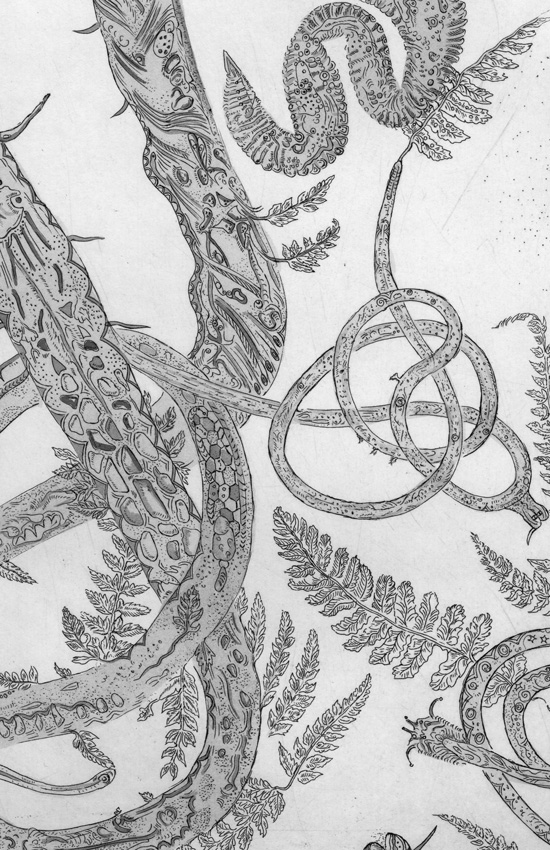

Fig 5
Knot form drawn
from nematode
specimens at the
Natural History Museum
(Copper etching, 2012)
The forms of Isomorphology can be realised in everyday observations. In a garden it is possible to observe the forms and symmetries in the plant life – bilateral leaves, branches, bilateral leaves on branches – and to ponder the possible combinations of such forms and symmetries. All of the Isomorphology forms and symmetries can be found in endless configurations in nature. Drawing can be used to experimentally combine the forms of Isomorphology to invent new bodies and landscapes with their own logic, similar to the logic, described by Goethe, of the invented plant:
“It will be possible to go on forever inventing plants and know that their existence is logical; that is to say, if they do not actually exist, they could, for they ... possess an inner necessity and truth.”
To apply Isomorphology is to play a game of observation; the aim is to derive understanding, from direct experience, which adds to the study. Training the eye to perceive abstractly and the mind to think creatively whilst simultaneously maintaining a strong connection to the individual specimen is a complex practice. I believe this understanding can be shared with others as a playful educational model, which relies on science while at the same time building an altered perspective; liberating form from the confines of scientific convention. Isomorphology encourages both learning (non-linear) and ‘unlearning’ – we are de-constructing inherited taxonomies in order to create new knowledge and new approaches.